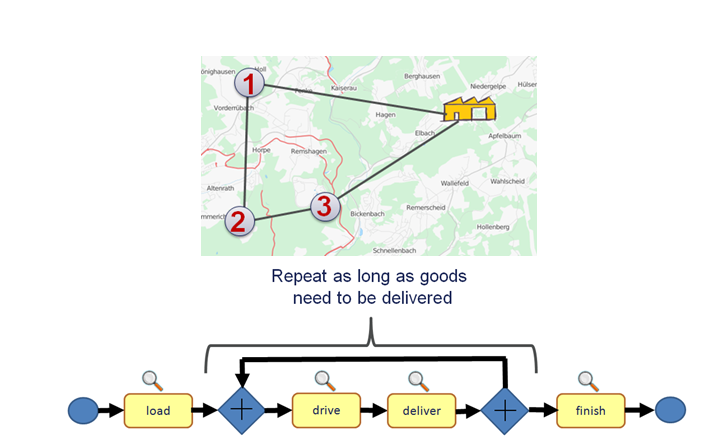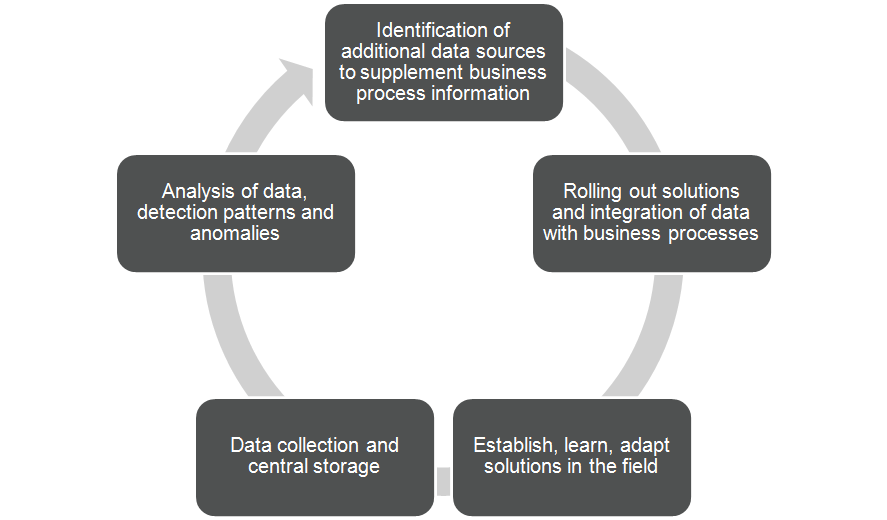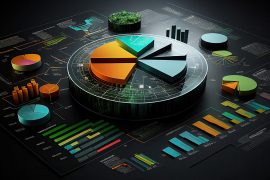Internet of Things (IoT), Big Data and Business Intelligence (BI) are very hot topics at the moment everybody is talking about. All of these trends are interesting for themselves as they promise deeper insides into a business and therefore lead to better business decisions.
- Internet of Things enables businesses to gather data and to control devices in real-time. Real-Time Dash Boards and a deeper process automation can be achieved.
- Big Data describes the collection and computation of a huge amount of data.
- Business Intelligence is the systematic analysis of data to show optimization potential and to back up predictions.
These IT-trends have one importing thing in common „“ all three of them are about data. Therefore, it is not really surprising that especially their combination leads to the use of their full potential.
Let us imagine the following scenario, which each of us is regularly in contact with. When you buy any product at Amazon or Zalando today, a huge supply chain is triggered that finally delivers a parcel with the bought product to your home. Typically, the product is fetched by some logistic service provider, brought into a logistic network and transported via several nodes inside of the network until it reaches its destination. A lot of things can happen to delay such a transport. Let us assume something simple like a traffic jam. Although a traffic jam is time boxed and affects only a small location it can drastically affect the delivery of goods. Usually, steps in a supply chain are tightly coupled so that a delay affects the whole chain. Simply put: If you are delayed at your first stop you will be late at the other stops, too. Delays cost time and money.

IoT enables businesses to gather near real-time information of the processes at the operation level of a company. With the help of a process modelling language like BPMN and a process execution platform you are able to model supply chains and, in combination with IoT, businesses are able to track and control the process execution. Let us have a look at the example above again: as soon as it is detected that the first stop is not reached in time, another vehicle could be informed to take over some of the steps in the chain. With the use of a BPM platform, you could monitor the execution time for driving and delivering as shown in the picture above. If a threshold is reached, an alarm could be raised. A handheld device could be used to acknowledge each delivered good and to send this information to the business company.
This allows the optimization of operational processes and to increase the quality of the provided service „“ the delivery of goods. The benefit of the usage of a process execution platform is adaptability and efficiency to model such scenarios. Furthermore, such models can be read by non-tech-savvy people.
As soon as a larger amount of data is gathered over months, further statistical methods can be applied to the data to predict the future up to a certain degree. With a certain probability events in the real world can be predicted, for example, that a vehicle is delayed. Each new data source (e.g. IoT devices) improves the data quality and therefore the prediction precision of business events.
As a result, a control loop evolves which is a combination between BI, IoT and Big Data as shown in the following diagram.

IoT allows us to add further data sources to improve the insight into a company“™s processes. Collected data can be used to identify patterns that inform about problems but also chances during the process execution. Handling this data can be achieved with Big Data principles; the better the data, the better the prediction of future business events.



